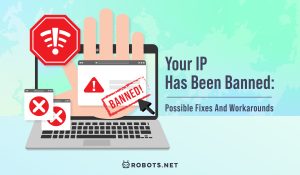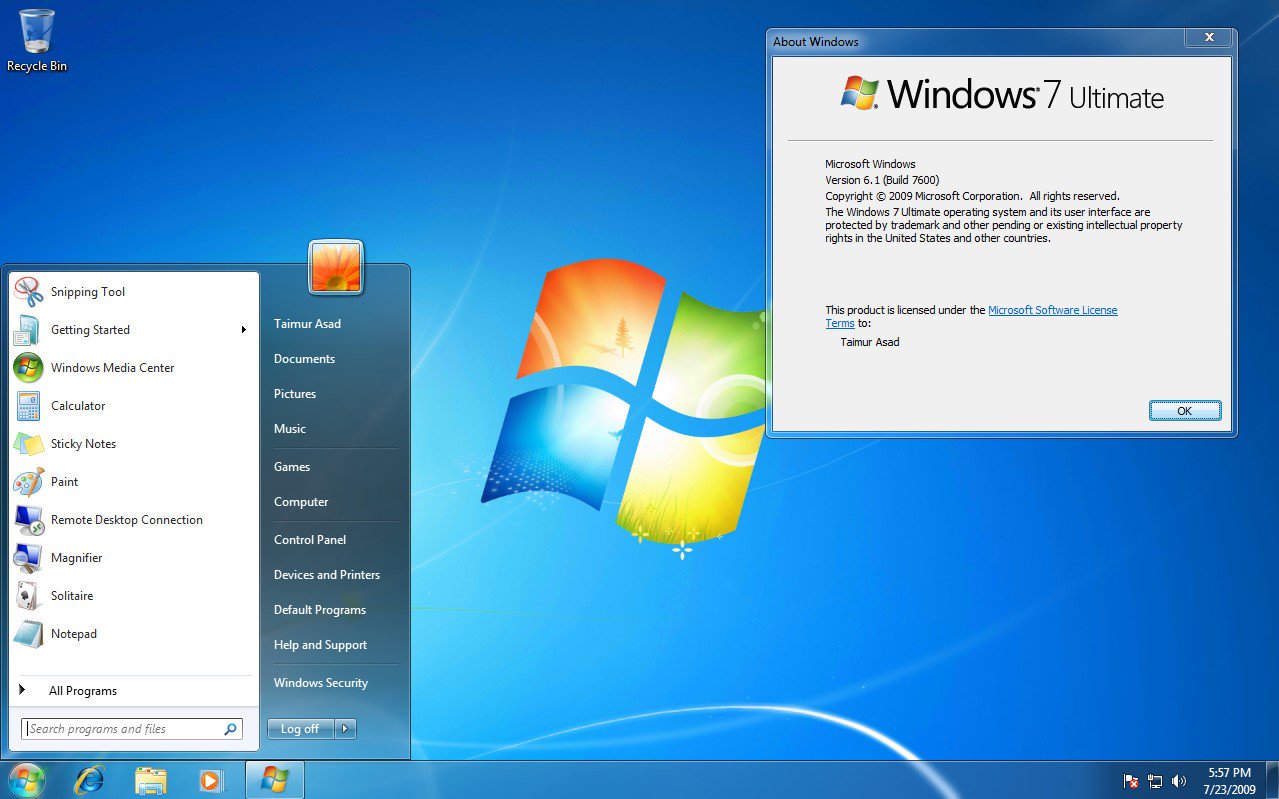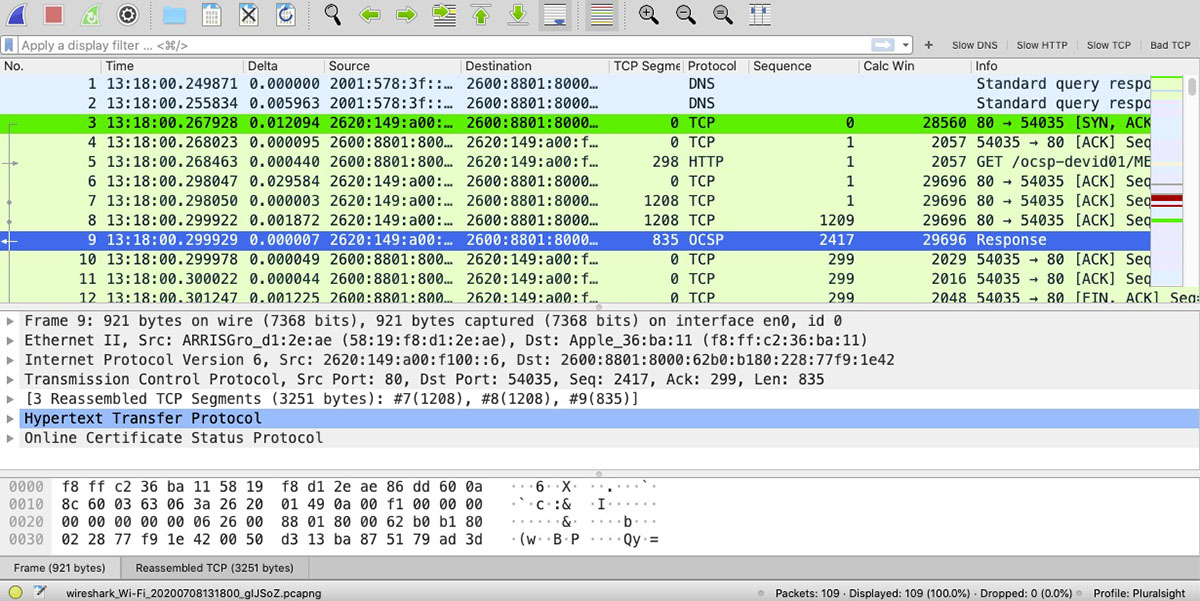Introduction
An IP address, short for Internet Protocol address, is a unique numerical identifier assigned to every device connected to a computer network. It serves as a virtual “address” that allows devices to communicate and exchange data over the internet.
IP addresses are essential for the functioning of the internet, enabling devices to send and receive information. They provide valuable insights into various aspects of a user’s online activity, such as location, internet service provider, and device type.
Understanding what an IP address can reveal about a user is crucial in today’s digital age, as it has implications for privacy, security, and targeted advertising. By examining an IP address, businesses, organizations, and even individuals can gain insights into the geographic location of users, their internet service provider, and even the type of device being used.
This article will delve deeper into the world of IP addresses, examining how they are assigned, what information can be gleaned from them, and the potential security concerns associated with this identification method. Additionally, we will discuss steps that individuals can take to protect their identity and safeguard their online activities.
So, let’s dive into the fascinating world of IP addresses and discover what they can tell us!
What is an IP Address?
An IP address is a unique numerical identifier assigned to each device connected to a computer network. It acts as the virtual address that allows devices to communicate with each other and exchange data over the internet. Just like your home address, an IP address helps route information to the correct destination.
IP addresses come in two versions: IPv4 (Internet Protocol version 4) and IPv6 (Internet Protocol version 6). IPv4 addresses consist of four sets of numbers separated by periods, such as 192.168.0.1. IPv6 addresses, on the other hand, are represented by eight sets of alphanumeric characters, such as 2001:0db8:85a3:0000:0000:8a2e:0370:7334. IPv6 was introduced to accommodate the growing number of devices connected to the internet.
Every device connected to the internet, whether it’s a computer, smartphone, tablet, or IoT (Internet of Things) device, is assigned an IP address. This address serves as a unique identifier that allows devices to send and receive data across the network.
There are two types of IP addresses: public and private. A public IP address is assigned to a device by the internet service provider (ISP) and is visible to the entire internet. It can be used to identify the general location of a user or a device. On the other hand, private IP addresses are used within local networks, such as a home or office network, to identify devices internally. These private addresses are not visible to the public internet.
IP addresses play a vital role in facilitating communication and data transfer across the internet. They enable devices to establish connections, access websites, send emails, and engage in countless online activities. Without IP addresses, the internet as we know it today would not be possible.
How is an IP Address Assigned?
An IP address can be assigned in various ways, depending on the type of network and the internet service provider (ISP) involved. Let’s take a look at the different methods of IP address assignment:
- Dynamic IP Address: This is the most common method of IP address assignment used by ISPs. When connected to the internet, devices are assigned a temporary IP address from a pool of available addresses. This assignment is dynamic, meaning it can change each time the device connects to the network. Dynamic IP addresses are cost-effective and efficient, allowing ISPs to serve a larger number of customers with a limited pool of addresses.
- Static IP Address: In contrast to dynamic IP addresses, a static IP address remains unchanged and is manually assigned to a device. This type of address is typically used for servers, websites, and devices that require a consistent and permanent internet presence. Static IP addresses are more reliable and provide certain benefits, such as easier remote access and hosting services. However, they can be more expensive and require additional configuration.
- Network Address Translation (NAT): NAT is a technique used in routers to conserve IP addresses. With NAT, a single public IP address is assigned to the router, while multiple devices within the local network are assigned private IP addresses. The router translates the private IP addresses to the public IP address when communicating with the internet. NAT allows multiple devices to share a single IP address, increasing the efficiency of address usage.
- Dynamic Host Configuration Protocol (DHCP): DHCP is a network protocol that automates the assignment of IP addresses. It allows devices to acquire IP addresses automatically from a DHCP server when connecting to a network. This method is commonly used in home networks and small businesses, as it simplifies the process of IP address management and eliminates the need for manual configuration.
Overall, the method of IP address assignment depends on factors such as the type of network, the ISP’s infrastructure, and the specific requirements of the device or network. Whether it’s dynamic or static, the assigned IP address plays a crucial role in allowing devices to connect and communicate on the internet.
Geolocation
One of the most intriguing aspects of an IP address is its ability to provide geolocation information. By analyzing an IP address, it is possible to determine the approximate geographical location of a device or user.
The geolocation of an IP address is primarily based on the IP address’s association with a specific country, region, or city. This information can be beneficial for various purposes, such as targeted advertising, content delivery, and fraud prevention.
Geolocation data obtained from IP addresses can be used by businesses to tailor their marketing strategies based on a user’s location. For instance, a global e-commerce company may display localized ads or prices based on the detected country of the user. Similarly, content providers can deliver region-specific content or services based on the geolocation information.
However, it’s important to note that IP-based geolocation is not always accurate. Factors such as the use of VPNs (Virtual Private Networks), proxy servers, or the presence of shared IP addresses within a region can lead to inaccuracies in geolocation identification.
Furthermore, privacy concerns arise when leveraging geolocation data obtained from IP addresses. While it can be useful for legitimate purposes, misuse of this information can result in invasion of privacy or targeted surveillance. Therefore, it is crucial for organizations to handle geolocation data responsibly and comply with relevant privacy regulations.
In summary, IP addresses provide valuable geolocation information that businesses and organizations can use to deliver personalized content and services. However, accuracy and privacy concerns need to be taken into account when leveraging this data.
Internet Service Provider (ISP)
Another piece of information that can be determined from an IP address is the Internet Service Provider (ISP) associated with the device. Every device connected to the internet is assigned an IP address by their ISP, which becomes a unique identifier for that particular ISP.
Knowing the ISP of a device can provide insights into the type of internet connection being used, the level of service, and even the general geographic location of the user. Different ISPs have different infrastructures and coverage areas, which can affect internet speeds and reliability.
For businesses and organizations, understanding the ISP can be valuable for targeted advertising, content delivery, and network optimization. For example, if an online streaming service knows the user’s ISP, they can optimize the streaming quality based on the ISP’s bandwidth capabilities. Advertisers can also adjust their ad campaigns based on specific ISPs to reach their desired audience more effectively.
Moreover, ISPs play a crucial role in maintaining and managing the internet infrastructure. They are responsible for providing internet connectivity to their customers, often via various technologies such as DSL, cable, fiber-optic, or satellite. ISPs are also responsible for managing network traffic, maintaining network infrastructure, and ensuring reliable and secure internet connectivity.
However, it’s essential to note that identifying the ISP of a device does not provide personally identifiable information (PII) about the user. The ISP information is generally associated with the IP address and does not reveal personal details such as name, address, or contact information.
While knowing the user’s ISP can be useful for marketing and network management purposes, it is crucial to handle this information with care and respect user privacy. ISPs and businesses must adhere to privacy regulations and protect user information to maintain trust and ensure data security.
In summary, IP addresses can reveal the Internet Service Provider (ISP) associated with a device, providing insights into the type of internet connection and geographic location. This information is valuable for targeted advertising, content delivery, and network optimization, but must be handled responsibly to protect user privacy.
Network Type
An IP address can also provide information about the type of network being used by a device. By analyzing the IP address, it is possible to determine whether the device is connected to a public network or a private network.
A public IP address is assigned to a device by the Internet Service Provider (ISP) and is visible to the entire internet. This type of address is commonly used for devices that require direct access to the internet, such as home computers, smartphones, or servers. A public IP address allows the device to communicate with other devices and servers across the internet.
On the other hand, a private IP address is used within a local network, such as a home or office network. Private IP addresses ensure that devices within the network can communicate with each other but are not directly accessible from the internet. This provides an extra layer of security by hiding the devices behind a router or network firewall.
Private IP addresses are commonly used in local networks to allocate unique addresses to devices, allowing for efficient communication and network management. These addresses are reserved for internal use and cannot be routed over the internet. Popular examples of private IP address ranges include 192.168.0.0 to 192.168.255.255 or 10.0.0.0 to 10.255.255.255.
Identifying the network type can be useful in understanding the infrastructure and connectivity of the device. For example, knowing whether a device has a public or private IP address can help determine its accessibility from the internet or whether it is part of a local network.
Businesses and organizations can also leverage this information to ensure network security and optimize network performance. By understanding the network type, they can implement appropriate security measures, such as firewalls and access control lists, to protect their internal devices. Network administrators can also optimize traffic routing and allocate resources based on the type of network being used.
It is important to note that the network type obtained from an IP address does not provide specific details about the network configuration or the devices connected to it. This information is generally used for network management purposes and does not reveal personal data about the user.
In summary, IP addresses can reveal the network type, whether it is a public or private network. This information is valuable for understanding network infrastructure, implementing security measures, and optimizing network performance.
Device Type
IP addresses can provide insights into the type of device being used by analyzing the network traffic and communication patterns associated with the IP address. While IP addresses themselves do not explicitly reveal the device type, certain characteristics and behaviors can indicate the general category of the device.
Through user-agent analysis and examining the HTTP headers, it is possible to identify the device type, such as a computer, smartphone, tablet, or IoT device. Different devices have unique identifiers, protocols, and communication patterns that can be detected and analyzed.
Knowing the device type can be valuable for various reasons. Businesses and content providers can use this information to optimize user experiences based on the device’s capabilities and resources. For example, a website can adapt its layout and design to suit different screen sizes or hardware capabilities of different devices.
Furthermore, device type information allows targeted advertising campaigns to be tailored specifically to the device being used. Advertisers can optimize their ads for mobile devices by creating mobile-responsive advertisements or designing mobile-specific ad formats, enhancing the effectiveness of their campaigns.
Identifying the device type is also relevant for network security purposes. Different devices have different vulnerabilities and security risks. By knowing the type of device connected to a network, network administrators can implement appropriate security measures and protocols to protect against device-specific threats.
However, it is crucial to recognize that device type identification is not foolproof. Some users may hide or change their user-agent information intentionally, leading to incorrect identification. Additionally, certain devices or applications may use non-standard user-agent strings, making accurate identification more challenging.
Overall, IP addresses can provide insights into the device type based on analysis of network traffic and communication patterns. This information can be valuable for optimizing user experiences, tailoring advertising campaigns, and enhancing network security.
Proxy Detection
Proxy servers act as intermediaries between client devices and the internet. They can be used to enhance privacy, bypass geographic restrictions, or improve network performance. However, proxy servers can also introduce security risks and complicate IP address analysis.
Proxy detection involves determining whether an IP address is associated with a proxy server. This information can provide insights into the user’s intent, presence of anonymity, and potential manipulation of geolocation and device information.
There are several methods used for proxy detection:
- Forwarded Headers Analysis: When user requests pass through a proxy, headers containing proxy-related information, such as X-Forwarded-For, X-Forwarded-Host, or X-Forwarded-Proto, are added. Analyzing these headers can help identify the presence of a proxy.
- IP Database Lookup: Proxy detection services maintain databases of known proxy server IP addresses. By looking up an IP address in these databases, it is possible to determine if it is associated with a proxy server.
- Behavioral Analysis: Analyzing network behavior, such as unusual traffic patterns or inconsistent geolocation data, can indicate the use of a proxy. For example, if the IP address is constantly changing or frequently associated with different geolocations, it could indicate proxy usage.
- Datacenter IP Detection: Datacenters often assign IP addresses in blocks that are typically used for proxies or virtual private servers (VPS). Identifying such IP ranges can help detect the use of proxies.
Proxy detection can be useful in various scenarios. Content providers can use this information to ensure fair access to their services and prevent abuse, such as circumventing restrictions or scraping data. Similarly, e-commerce platforms can identify potential fraudulent activity based on proxy usage.
However, proxy detection is not always foolproof. Advanced proxy techniques, such as anonymization tools or VPNs, can obfuscate the actual IP address and make accurate detection more challenging.
It’s important to note that the use of proxies itself is not illegal or malicious. Many legitimate users and organizations rely on proxies for legitimate purposes, such as privacy protection or enhanced security. Proxy detection is primarily used to identify potential abuse, unauthorized access, or suspicious behavior.
In summary, proxy detection involves determining whether an IP address is associated with a proxy server. This information can provide insights into user intent, anonymity, and manipulation of geolocation and device information. Proxy detection is useful in preventing abuse, protecting content, and enhancing network security, although it is not foolproof.
Security Concerns
While IP addresses serve as vital components of internet connectivity, they also give rise to various security concerns. Understanding these concerns is essential for individuals and organizations to protect their privacy and secure their online activities.
Here are some of the key security concerns associated with IP addresses:
1. Tracking and Privacy: IP addresses can be used to track and monitor online activities. By linking an IP address to specific individuals or devices, it’s possible to create detailed profiles about their browsing habits, interests, and even physical location. This raises significant privacy concerns, as sensitive information can be exposed or misused.
2. Network Attacks: Malicious actors can use IP addresses to launch network attacks, such as Distributed Denial of Service (DDoS) attacks or brute force attacks. By targeting specific IP addresses, attackers can overload systems, disrupt services, or gain unauthorized access to devices or networks.
3. IP Spoofing and Impersonation: Attackers can use techniques like IP spoofing to forge or manipulate IP addresses, making it appear as if the traffic is originating from a different source. This can be used to bypass security measures, hide the origin of an attack, or impersonate a trusted source.
4. Phishing and Scams: Cybercriminals often use IP addresses to host phishing websites or send scam emails. By appearing to originate from a trusted IP address or by mapping IP addresses to legitimate domains, attackers attempt to deceive users into sharing sensitive information or downloading malicious content.
5. Geolocation Exploitation: Determining the geolocation of an IP address can be used for targeted attacks or to bypass regional restrictions. Attackers can leverage this information to launch region-specific attacks or gain access to restricted content.
To mitigate these security concerns, individuals and organizations can take several proactive measures:
– Implementing robust network security measures, such as firewalls, intrusion detection systems, and secure configurations.
– Utilizing encryption technologies, such as Virtual Private Networks (VPNs) or Secure Socket Layer (SSL) certificates, to protect data transmission and maintain privacy.
– Keeping devices and software updated with the latest security patches to mitigate vulnerabilities that attackers could exploit.
– Being cautious of suspicious emails, websites, or unexpected requests for personal information.
– Using reputable antivirus and anti-malware software to detect and prevent malicious activities.
It is crucial to remain vigilant and educated about the evolving landscape of online threats and take appropriate measures to safeguard against them.
In summary, IP addresses can pose security concerns related to tracking, network attacks, impersonation, phishing, and exploitation of geolocation information. Awareness of these security risks and implementing appropriate security measures are paramount to maintaining privacy and protecting against malicious activities.
How to Protect Your Identity
Given the potential privacy and security risks associated with IP addresses, it is crucial to take proactive measures to protect your identity and safeguard your online activities. Here are some essential tips to consider:
- Use a VPN: A Virtual Private Network (VPN) encrypts your internet connection, masking your IP address and providing a secure and private browsing experience. It routes your internet traffic through a remote server, effectively hiding your real IP address from prying eyes.
- Use Strong and Unique Passwords: Ensure that your online accounts have strong and unique passwords. Avoid using common phrases or personal information that can be easily guessed. Consider using a password manager to generate and store complex passwords securely.
- Enable Two-Factor Authentication (2FA): Many online services offer 2FA, which adds an extra layer of security to your accounts. By requiring a second verification step, such as a code sent to your mobile device, it makes it significantly harder for unauthorized individuals to access your accounts.
- Regularly Update Software and Devices: Keep your operating system, antivirus software, and all applications up to date with the latest security patches. Updates often include bug fixes and security enhancements that protect against known vulnerabilities.
- Be Cautious with Personal Information: Be mindful of sharing sensitive personal information online, especially on public or unsecured networks. Think twice before providing personal details on websites or in emails, and only share sensitive information on secure websites with a valid SSL certificate (look for the padlock symbol in the address bar).
- Regularly Check Privacy Settings: Review the privacy settings of your social media accounts, email providers, and other online services. Make sure you are comfortable with the information being shared and adjust privacy settings accordingly.
- Use Secure Wi-Fi Networks: Avoid using public Wi-Fi networks for sensitive activities, such as online banking or accessing private accounts. Instead, use trusted networks with password protection or consider using a VPN for added security.
- Be Wary of Phishing Attacks: Be cautious of unsolicited emails, messages, or phone calls asking for personal or financial information. Legitimate organizations will not ask for sensitive information via email or other insecure channels. Always double-check the sender’s email address and independently verify the request if in doubt.
- Monitor Your Online Presence: Regularly monitor your accounts and online activities for any signs of unauthorized access or suspicious behavior. Set up alerts or notifications for unusual logins or activity on your accounts.
By following these best practices, you can minimize the risk of identity theft, maintain your privacy, and protect your online identity.
Conclusion
IP addresses play a crucial role in our interconnected digital world. They allow devices to communicate, connect to the internet, and transfer data. However, IP addresses also reveal valuable information that can be used to identify users, determine their location, and understand the devices they’re using. While this can be beneficial for businesses and organizations in providing tailored experiences and targeted advertising, it also raises concerns about privacy and security.
Understanding what an IP address can reveal about you is essential for protecting your identity and maintaining your online privacy. By implementing security measures, such as using VPNs, enabling two-factor authentication, and keeping software up to date, you can mitigate the risks associated with IP addresses.
It is equally important for businesses and organizations to handle IP address information responsibly, ensuring compliance with privacy regulations and respecting user privacy rights. By maintaining transparency and providing clear guidelines on how user information is collected, used, and protected, trust between organizations and their customers can be established.
In today’s digital landscape, where personal data is increasingly valuable and privacy concerns are paramount, understanding the implications of IP addresses is crucial. By staying informed, implementing best practices, and advocating for responsible data handling, we can navigate the digital realm with greater confidence and security.

























